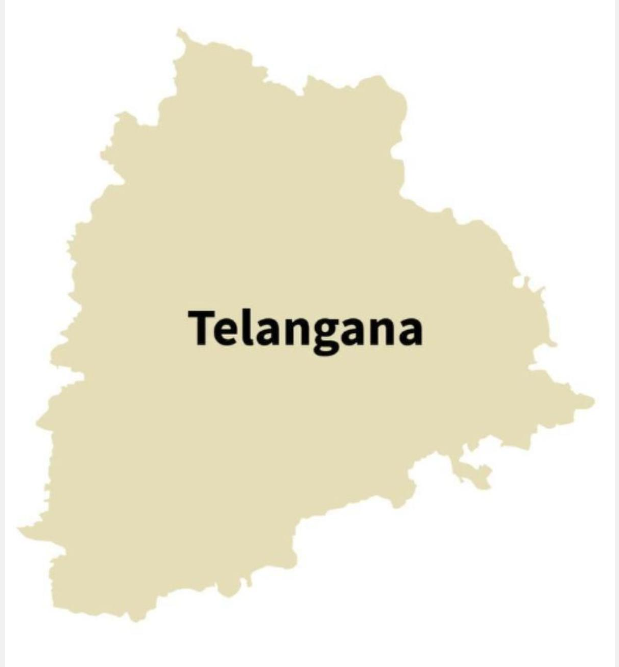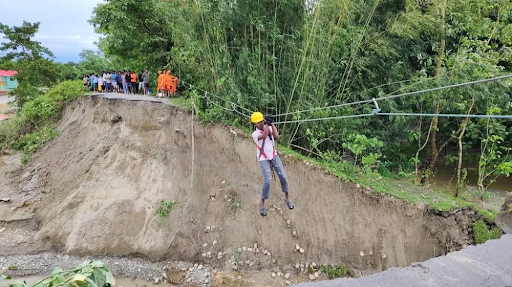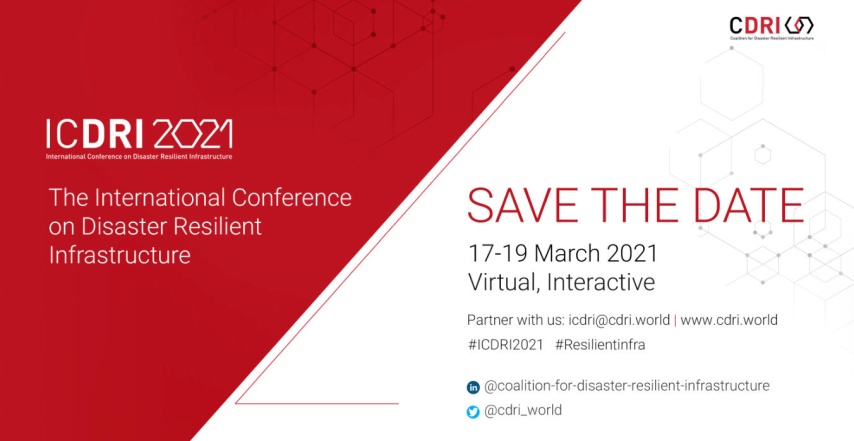
Disclaimer: Copyright infringement not intended.
Context
- Recently, Prime Minister, Shri Narendra Modi addressed the inaugural session of the fourth edition of the International Conference on Disaster Resilient Infrastructure.
Highlights
- Prime Minister Modi reminded the gathering that the solemn promise of the Sustainable Development Goals is to leave no one behind.
- Prime Minister said that infrastructure is about people and providing them high quality, dependable, and sustainable services in an equitable manner.
- Prime Minister talked about the importance of infrastructure in unleashing the human potential and said that damage to infrastructure leads to lasting damage for generations.
- India is committed to meeting the needs of the poorest and the most vulnerable by building the next generation infrastructure to realize their aspirations.
- The initiative on 'Infrastructure for Resilient Island States' that was launched at COP-26 and CDRI's work on Resilient Airports studying 150 airports around the world.
- The 'Global Assessment of Disaster Resilience of Infrastructure Systems' that is being led by CDRI will help create global knowledge that would be immensely valuable.
- In order to make our future resilient we have to work towards a 'Resilient Infrastructure Transition'. Resilient infrastructure can also be the centerpiece of our wider adaptation efforts.
- If we make infrastructure resilient, we prevent disasters not only for ourselves but for many future generations
International Conference on Disaster Resilient Infrastructure
- The International Conference on Disaster Resilient Infrastructure (ICDRI) is CDRI's flagship event bringing together policymakers, researchers and practitioners from across the world to strengthen the global discourse on disaster and climate resilient infrastructure.
- The International Conference on Disaster Resilient Infrastructure (ICDRI) is an annual international conference and platform to continue building an engaged global community for disaster and climate resilient infrastructure.
- Its objective is to promote research and knowledge sharing in the fields of infrastructure risk management, standards, financing, and recovery mechanisms.
- Launched by India, at the 2019 UN Climate Summit, the Coalition for Disaster Resilient Infrastructure (CDRI) includes -
Afghanistan, Argentina, Australia, Bhutan, Chile, Fiji, France, Germany, India, Italy, Jamaica, Japan, Maldives, Mauritius, Mongolia, Nepal, Netherlands, Peru, Sri Lanka, Turkey, the United Kingdom and the United States of America.
- Six organizations—The World Bank Group, The Asian Development Bank, The United Nations Development Programme (UNDP), The United Nations Office for Disaster Risk Reduction (UNDRR), The Private Sector Alliance for Disaster Resilient Societies (ARISE) and Coalition for Climate Resilient Investment (CCRI) are supporting partners.
Disasters
- Disasters are serious disruptions to the functioning of a community that exceed its capacity to cope using its own resources.
- Disasters can be caused by natural, man-made and technological hazards, as well as various factors that influence the exposure and vulnerability of a community.
- Natural and human-caused disasters affect thousands of people each year. Major adverse events such as these have the potential to cause catastrophic loss of life and physical destruction. They are unexpected and leave whole communities in shock. People who live through a disaster experience emotional distress.
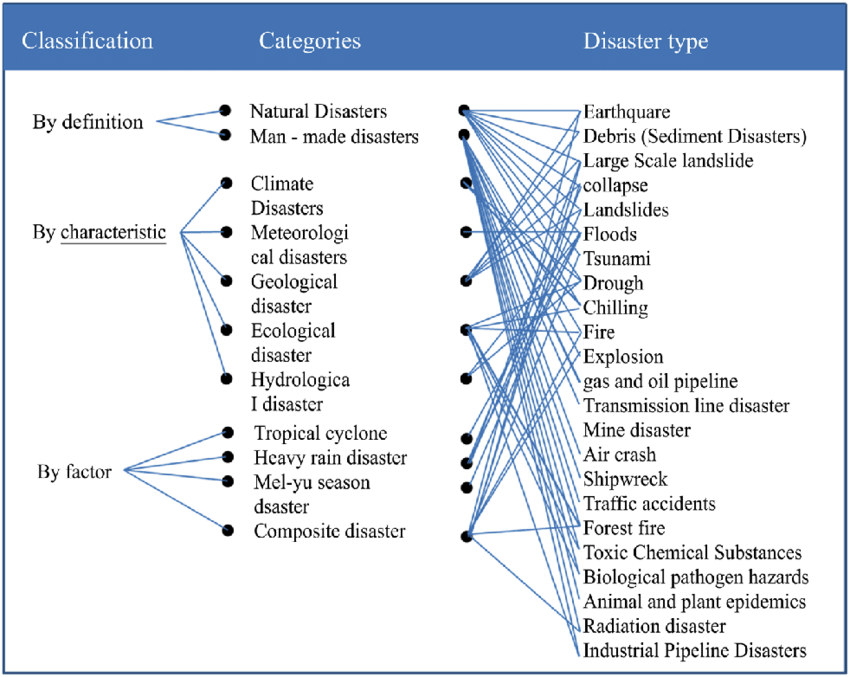
Status of Disasters
Emergency Events Database (EM-DAT)
- In the last 4 decades, the frequency of natural disasters recorded in the Emergency Events Database (EM-DAT) has increased almost three-fold, from over 1,300 events in 1975–1984 to over 3,900 in 2005–2014.
- In 2019, 396 natural disasters were recorded in EM-DAT with 11,755 deaths, 95 million people affected and 103 billion US$1 in economic losses across the world.
- Asia suffered the highest impact and accounted for 40% of disaster events, 45% of deaths and 74% of the total affected.
- India was hit hardest and recorded nearly 20% of the total deaths and 24.5% of the total number of people affected. Floods were the deadliest type of disaster accounting for 43.5% of deaths, followed by extreme temperatures at 25% (mainly due to heat waves in Europe) and storms at 21.5%. Storms affected the highest number of people, accounting for 35% of the total affected, followed by floods with 33% and droughts with 31%.
Global Natural Disaster Assessment Report -2020:
- A total of 313 major natural disasters (excluding epidemic diseases)1 occurred worldwide in 2020, affecting 123 countries and regions
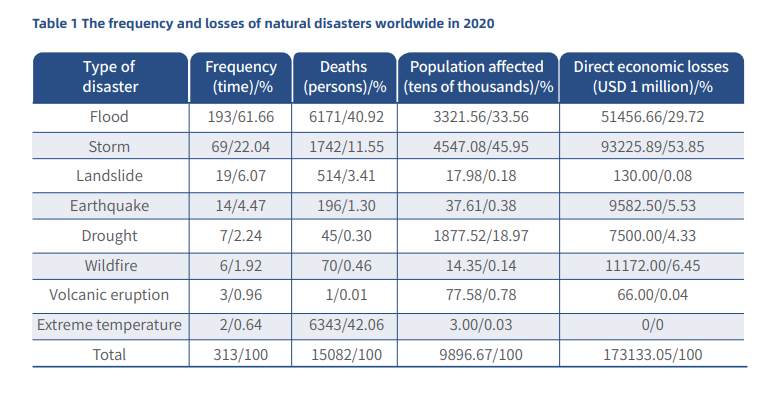
Impact
Economic Losses
- An analysis of records in 104 countries found that between 2005 and 2017, small and medium, localized and frequent disasters caused 68% of all economic losses.
- These losses are a major driver of poverty as they tend to be absorbed by low-income households and communities, small businesses, and local and national governments.
Lost Productivity
- Analysis from the World Bank finds that during 1960-2018, climate disasters reduced annual productivity by an average of 0.5 percent.
- After three years, severe climate disasters lower labor productivity by about 7 percent, mainly through weakened total factor productivity.
Lost investment
- Disasters also divert funding from investments to finance the rebuilding costs.
- In the US for instance, hurricanes caused $306 billion in damages in 2017 and $91 billion in 2018. As a result, productive investment fell about $400 billion in total in those years.
Mental health
- Disasters can also impact mental health. People whose homes are damaged by storms or flooding are significantly more likely to experience mental health issues such as depression and anxiety.
Indirect and intangible losses
- Direct losses refer to the physical or structural impact caused by the disaster such as the destruction of infrastructure resulting from high winds, flooding or ground shaking.
- Indirect effects are the subsequent or secondary results of the initial destruction, such as business interruption losses. A full consideration of all direct, indirect, and intangible losses would produce much higher loss estimates than the more easily quantified and commonly seen records of direct loss.
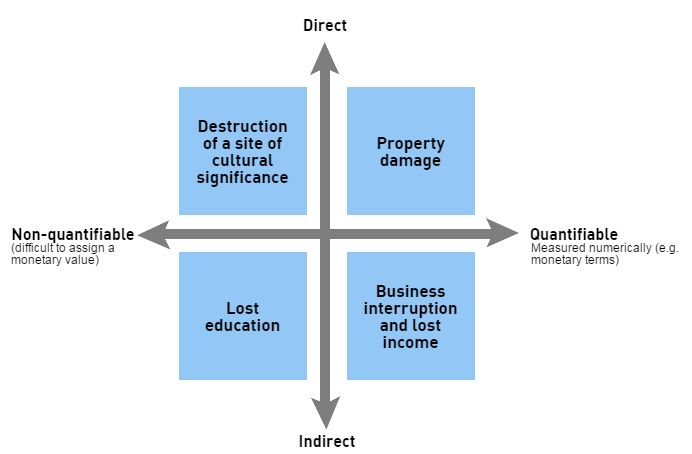
According to the WMO Atlas of Mortality and Economic Losses from Weather, Climate and Water Extremes (1970 – 2019), there were more than 11 000 reported disasters attributed to these hazards globally, with over 2 million deaths and US$ 3.64 trillion in losses.
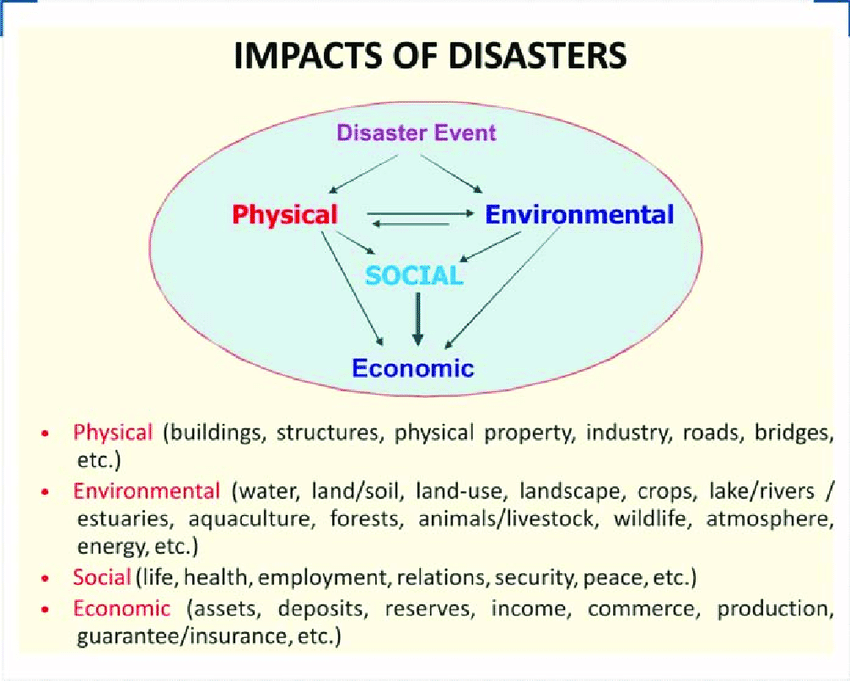
What is Disaster Resilience?
- It is the ability of a system, community or society exposed to hazards to resist, absorb, accommodate, adapt to, transform and recover from the effects of a hazard in a timely and efficient manner, including the preservation and restoration of its essential basic structures and functions through risk management.
- Resilience is about anticipating, planning and reducing disaster risk to effectively protect persons, communities and countries, their livelihoods, health, cultural heritage, socio-economic assets and ecosystems.
- The ideas of ‘bounce back’, ‘spring forward’ and ‘build back better’ are often used in the context of resilience.
Resilience is related to ‘capacity’ and ‘coping capacity’ and often understood as follows:
- Resilience: the ability to flourish in the face of disaster risk
- Capacity: strengths and resources available to anticipate, cope with, resist and recover from disasters
- Coping capacity: the ability to face and manage disasters
How do we measure resilience?
There have been a number of approaches, tools and methods applied to measuring resilience, focusing on assessing elements such as:
- Technological capacity
- Skills and education levels
- Economic status and growth prospects
- Quality of environment and natural resource management institutions
- Livelihood assets
- Political structures and processes
- Infrastructure
- Flows of knowledge and information
- Speed and breadth of innovation
How do we build resilience?
Resilience building needs to consider the fact that several shocks and stresses may occur together. Characteristics of a resilient system include:
- High level of diversity in terms of access to assets, inclusion in decision-making and the availability of economic opportunities.
- Level of connectivity between institutions and organizations at different scales and the extent of information, knowledge, evaluation and learning sharing up, down and across these scales.
- Blended forms of knowledge used to anticipate and manage change.
- Equal and inclusive balanced distribution of risks.
- Social cohesion and capital allowing individuals to be supported within social structures
- Holistic framework for assessing systems and their interaction, from the household and communities through to the sub-national and national level.
- Emphasize capacities to manage hazards or disturbances
- Help to explore options for dealing with uncertainty, surprises and changes.
- Improving cooperation and harmonization of programming across sectors.
- Investing in proactive, long-term projects that anticipate shocks, reduce risks and improve capacities to manage change.
- Aligning Disaster Risk Reduction with other risk-based interventions (i.e. conflict prevention or social protection, climate change adaptation, etc.)
- Resilience needs to be enhanced at all levels, from the local to the international.
- It is about preventing the creation of risk, the reduction of existing risk and the strengthening of economic, social, health and environmental resilience through the adoption and implementation of national and local disaster risk reduction strategies and plans, across different timescales with targets, indicators and time frames.
Five major requirements of being a disaster resilient society are the ability to:
- Anticipate risk : understand and assess risk
- Prepare to adjust : use tools to support decision-making in the face of the uncertainty of future risks (e.g. scientific models)
- Share and learn : improve people’s flexibility to deal with different challenges by making them better informed or experimenting with different approaches, enhancing understanding of risks and supporting flexibility
- Integrate sectors : promote greater dialogue and coordination across sectors and disciplines (e.g. climate change)
- Include the most vulnerable : manage risk across all levels, connect decision-making and consider the weakest part of the system. Small island developing states (SIDS) and low and middle-income countries continue to lack resilience to disaster risk.
What is Disaster Resilient Infrastructure?
- Disaster resilient infrastructure include vital buildings, public communal facilities, transit systems, telecommunications, and power systems that are strategically designed to withstand the impact of a natural disaster like a flood, earthquake, or wildfire.
- The meaning of disaster resilient infrastructure is ,physical and IT infrastructure designed to protect community buildings, roads, and technology in the case of a natural disaster. Essentially, infrastructure needs to be well designed to withstand any storm or flood that can wipe out your community and constituents.
- Disaster resilient architecture is one of the pivotal aspects of risk management and disaster preparedness.
Few Examples of Disaster Resilient Infrastructure
Landslide Resistant Structures
- Landslides can easily destroy a building in a poor location or without the proper protection.
- Preventative measures against landslides include:
- Adding retaining walls: these walls made of concrete, metal, or wood can hold back soil to prevent landslides.
- Using groundwater drainage systems: unstable slopes that oftentimes turn into landslides as a result of groundwater. Using draining structures like trench or surface drains will prevent the water from reaching the soil that poses a threat.
- Slope angle trimming: remove soil from the top of the slope to ensure that no debris will make its way down a hill.
Earthquake Resistant Structures
- Build with flexible foundations: a building is constructed on top of flexible pads that isolate the foundation from the ground. When an earthquake hits, only the base moves while the structure remains steady.”
- Build with structural steel: structural steel is designed to be bendable, meaning that even if an earthquake forces a building to shake, it won’t cause the material to snap like less durable materials might.
Significance of CDRI in this context
- CDRI promotes rapid development of resilient infrastructure to respond to the Sustainable Development Goals’ imperatives of expanding universal access to basic services, enabling prosperity and decent work.
The following are CDRI’s strategic priorities:
- Technical Support and Capacity-building: This includes disaster response and recovery support; innovation, institutional and community capacity-building assistance; and standards and certification.
- Research and Knowledge Management: This includes collaborative research; global flagship reports; and a global database of infrastructure and sector resilience.
- Advocacy and Partnerships: This includes global events and initiatives; marketplace of knowledge financing and implementation agencies; and dissemination of knowledge products.
Final Thoughts
- It is estimated that investment in more resilient infrastructure would have a net benefit of $4.2 trillion in low and middle income countries.
- Each dollar invested is estimated to benefit $4, according to Lifelines: The Resilient Infrastructure Opportunity, a report of the World Bank and the Global Facility for Disaster Reduction and Recovery (GFDRR).
- Countries that are making large investments in infrastructure, such as India, must ensure that this is an investment in resilience, and not in risk.
- The notion of ‘resilient infrastructure’ must become a mass movement galvanising the energies of not just the experts.
- Investment in disaster resilient infrastructure is the pivot for risk reduction in loss of life and property as global warming continues to cause increase in the incidence as well as severity of extreme weather events.
https://pib.gov.in/PressReleasePage.aspx?PRID=1822503










